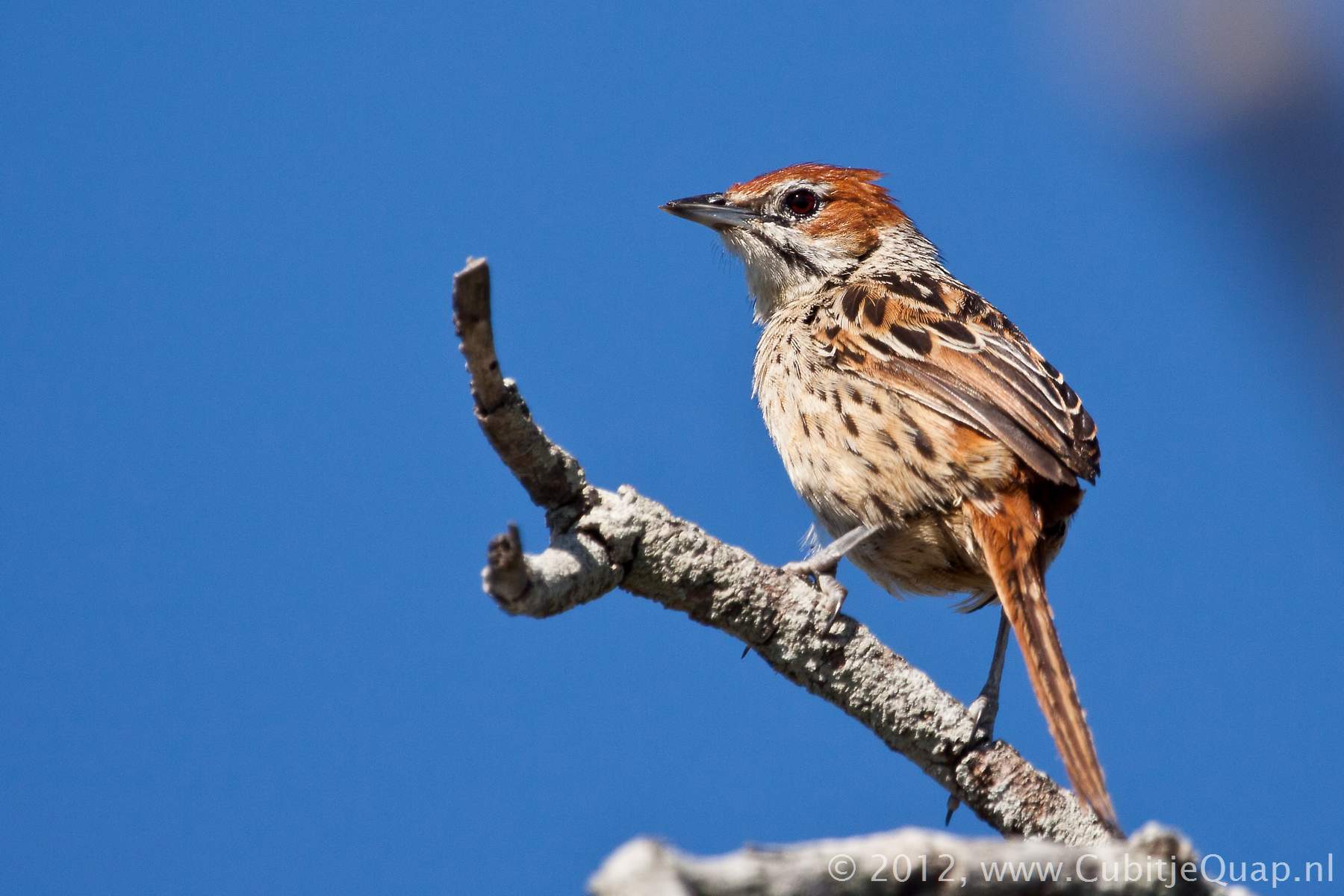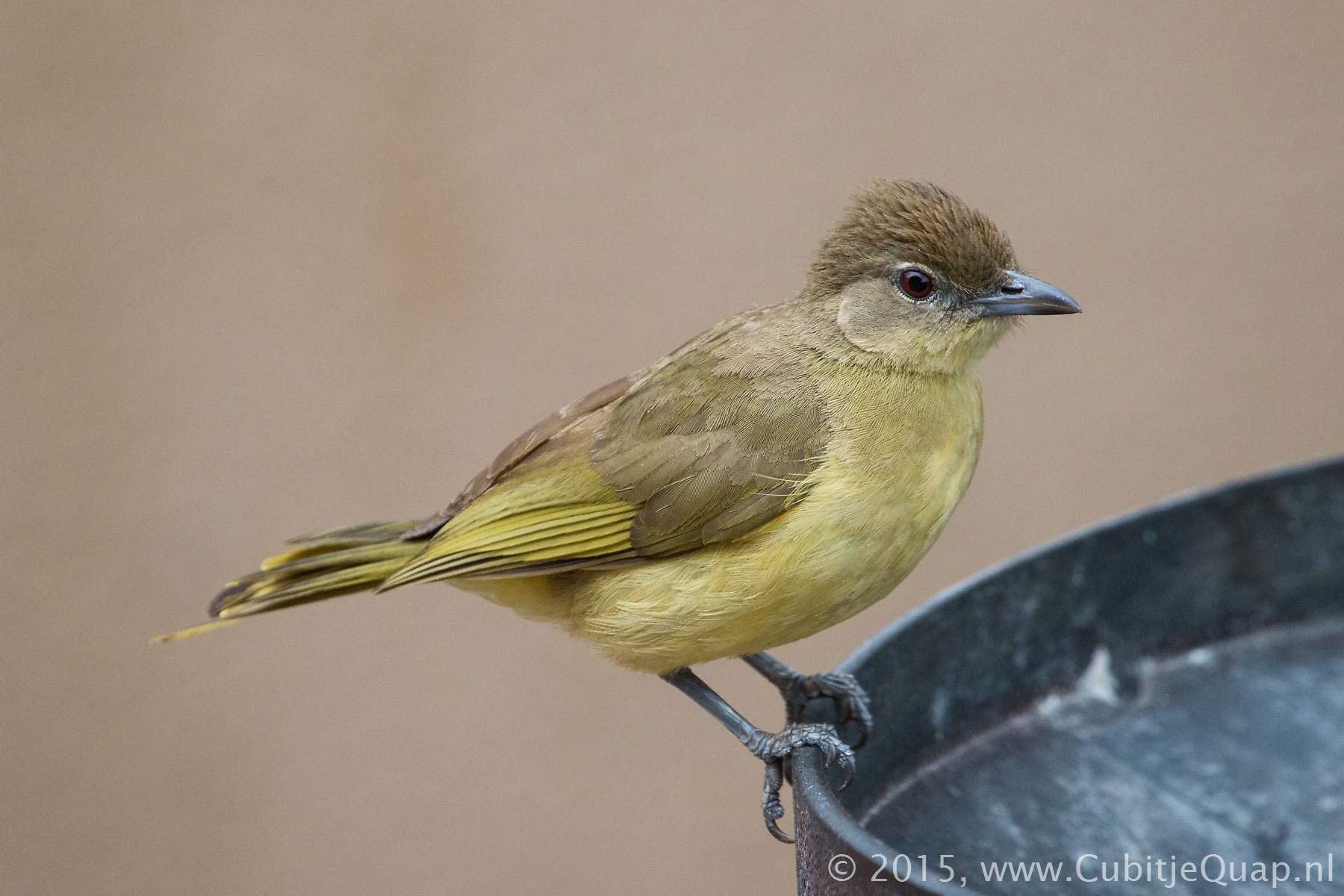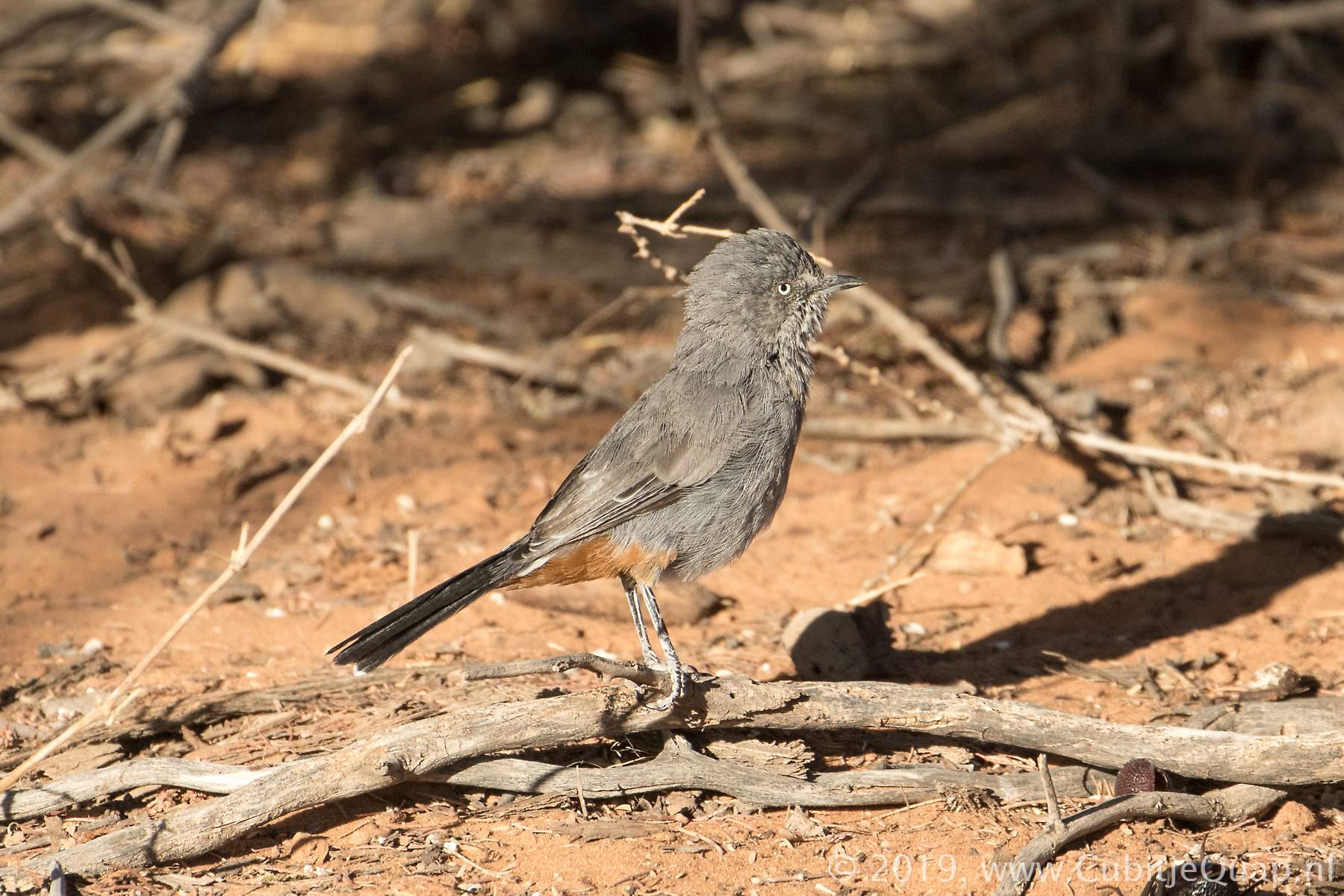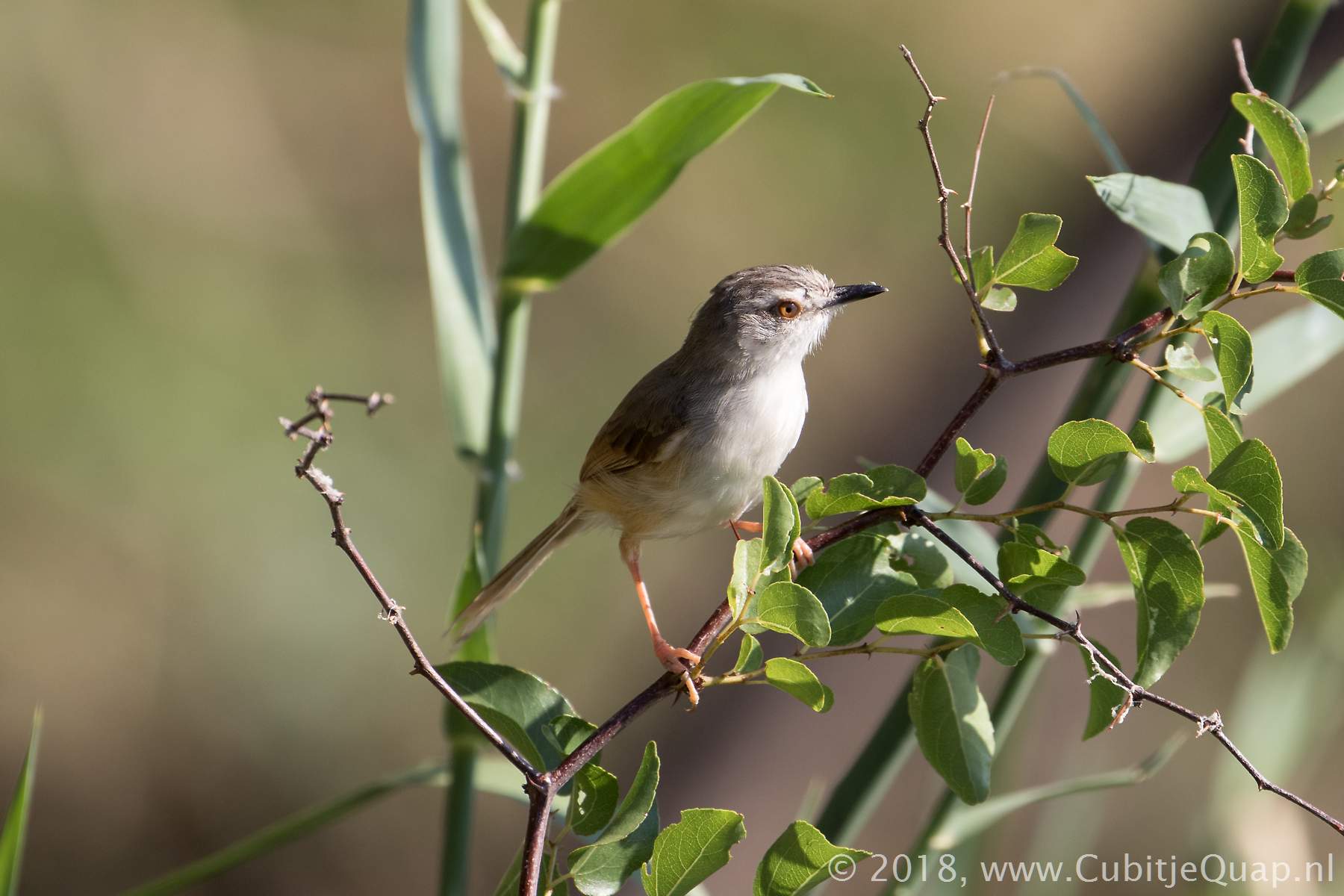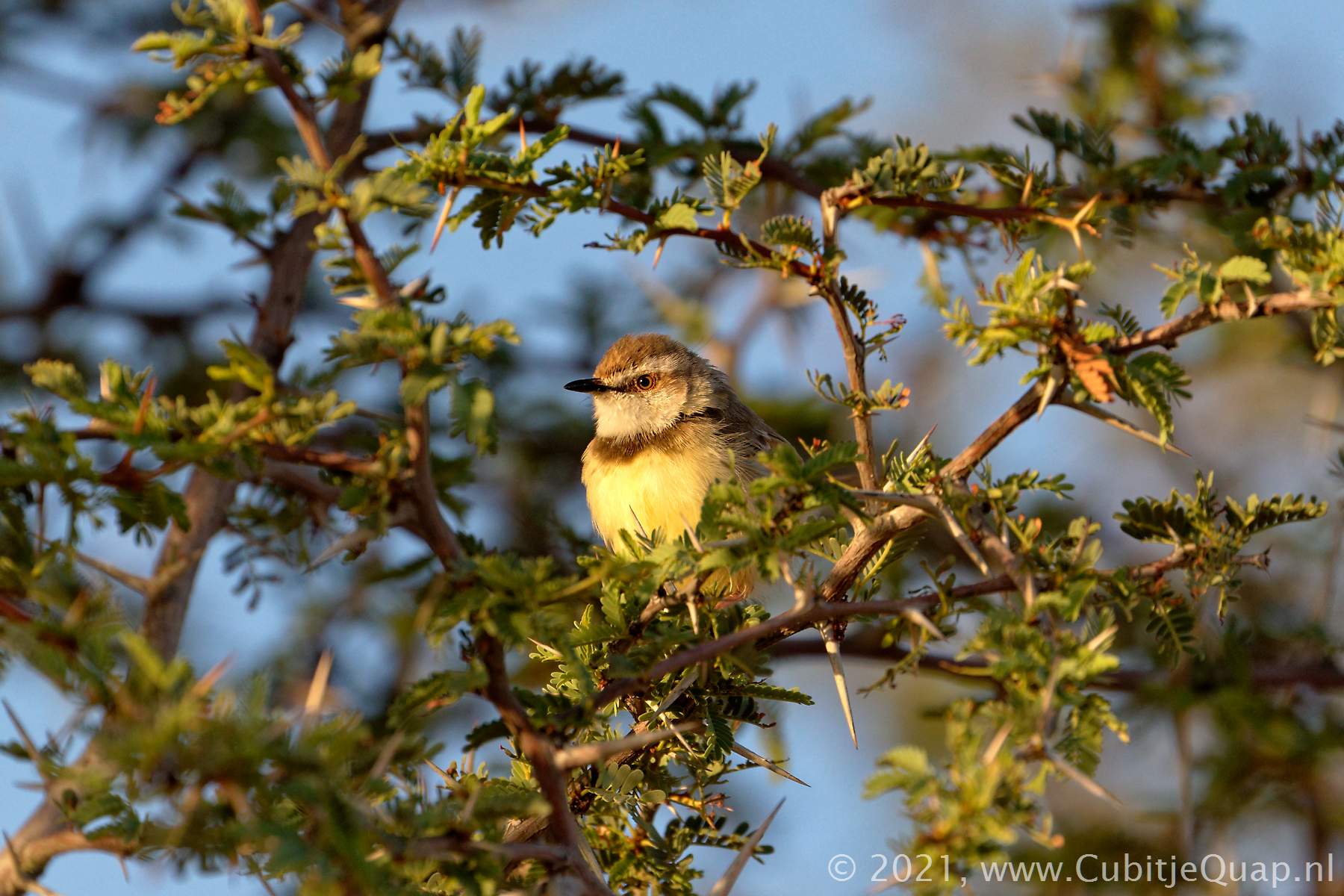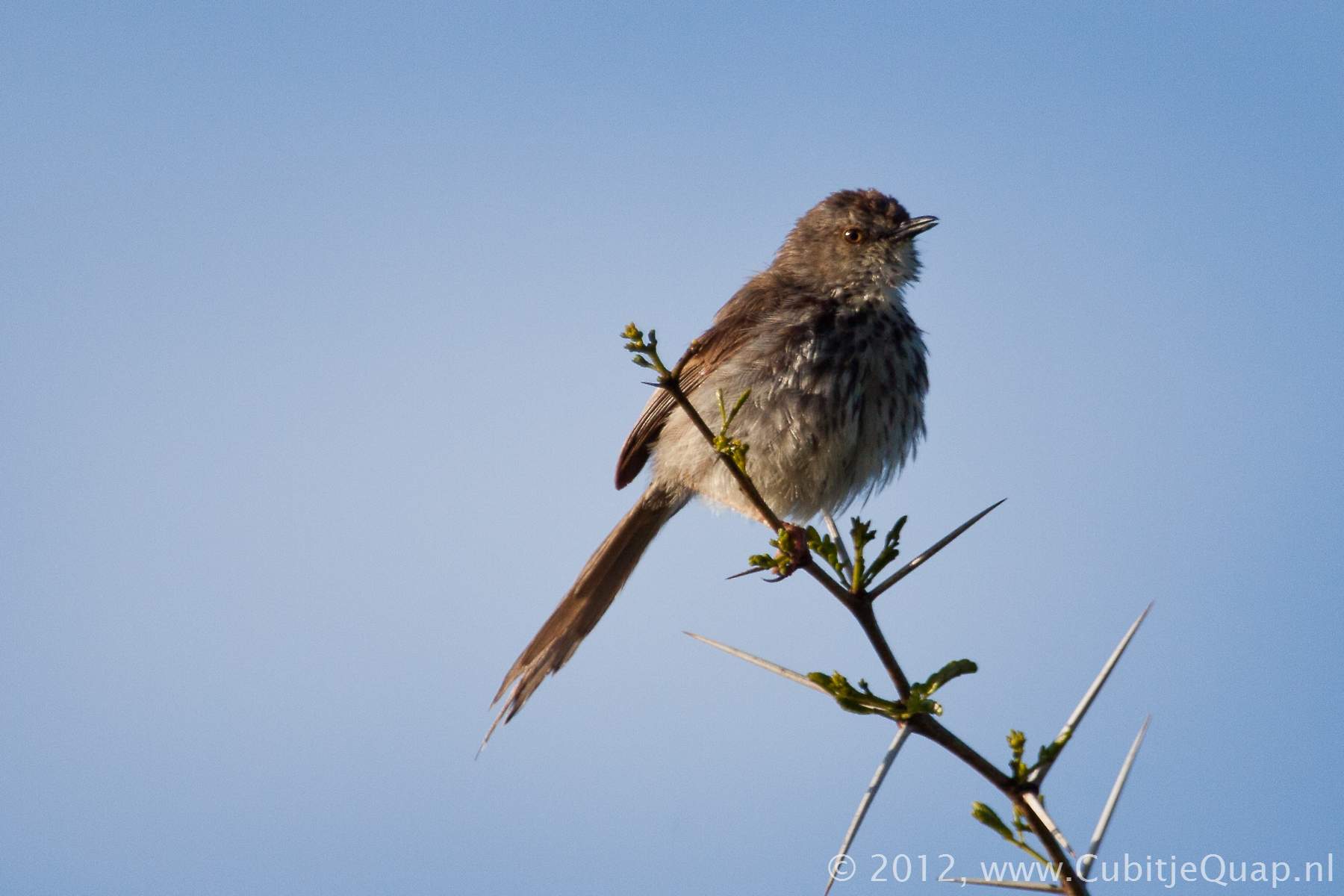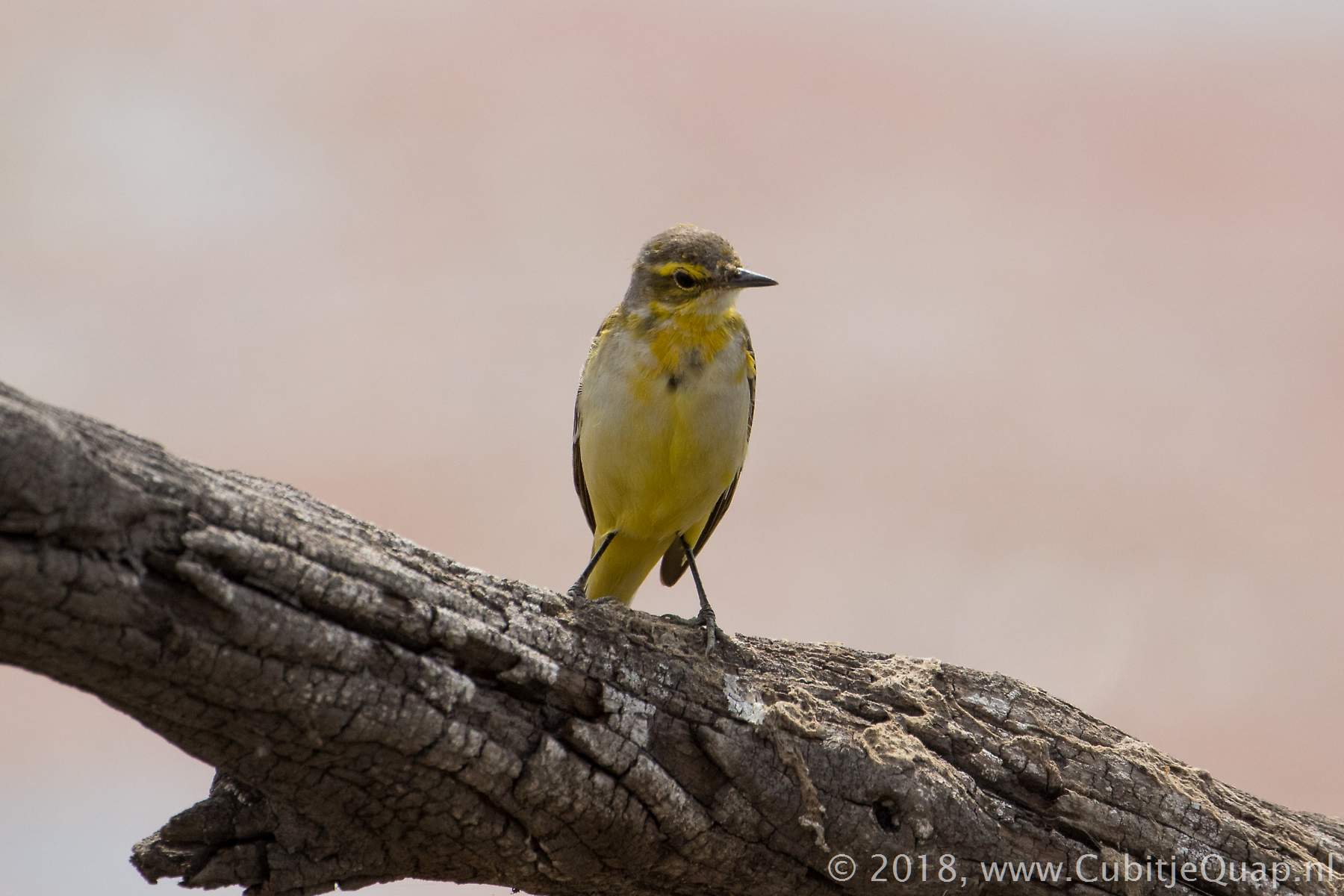Warblers Information page
Description
Warblers are small insectivorous passerine birds. The taxonomy of warblers is complex.Scientific names
Sphenoeacus = wedge-tailedIduna = origin uncertain, possibly a phonetic rendering of the greek for nightingale (aedonis)
Sylvia = warbler
Prinia = local Javanese name for these warblers
Phylloscopus = leaf watcher
Sylviidae
Most species may sunbathe atop grasses or bushes in the morning. They are almost exclusivey insect-eaters, feeding mainly from vegetation or directly from the ground, but some species may hawk prey aerially. They usually do not flock, being secretive and dropping away from sight if disturbed.They are monogamous and most species are territorial. usually they are solitary nesters. Incubation and cheick-rearing duties are generally undertaken by both sexes.
Cisticolidae
Small, lively, long-tailed, often gregarious warblers found in a variety of habitats. They have long, strongly pointed tails, which is usually cocked up over the back and moved in agitated fashion from side to side as they flit restlesly through the canopy of trees and bushes. With their thin, straight bills, they glean small insects from leaves and stems. They may also feed on the ground.They are monogamous and territorial, incubation is done by the female, care of the young by both parents.
Phylloscopidae (leaf warblers)
These arboreal birds are often green-plumaged above and yellow below, or more subdued with greyish-green to greyish-brown colours, varying little or not at all with the seasons. The tails are not very long and contain 12 feathers.They are active, constantly moving, often flicking their wings as they glean the foliage for insects along the branches of trees and bushes. They forage at various levels within forests, from the top canopy to the understorey. Most of the species are markedly territorial both in their summer and winter quarters.
They are monogamous and they build domed nests of moss, skeletonised leaves and grass, which is placed on of just above the ground, usually on a moss-covered bank. Clutch of 2 - 3 pinkish eggs spotted with red and grey is incubated by the female alone. Both sexes take care of the chicks.
Interesting links
Wikipedia (Sylviidae)Wikipedia (Cisticolidae)
Wikipedia (Phylloscopidae)
fatbirder.com (Sylviidae)
fatbirder.com (Cisticolidae)
fatbirder.com (Phylloscopidae)

